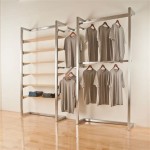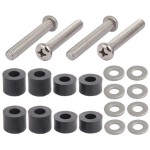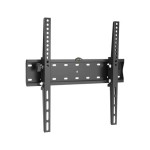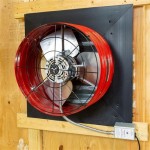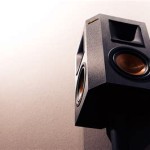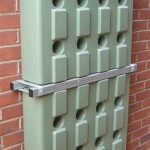Ductless Wall Mounted Range Hoods: A Comprehensive Guide
Ductless wall mounted range hoods, also known as recirculating range hoods, offer a ventilation solution for kitchens where installing ductwork to the exterior is impractical or impossible. They function by drawing in air laden with smoke, grease, and odors, filtering it internally, and then recirculating the cleaned air back into the kitchen. This contrasts with ducted range hoods, which exhaust the contaminated air to the outside.
Understanding the nuances of ductless wall mounted range hoods is crucial for homeowners considering this type of ventilation system. This article provides a detailed examination of their functionality, benefits, limitations, installation considerations, and maintenance requirements, offering a comprehensive overview for informed decision-making.
Understanding the Functionality of Ductless Range Hoods
The core function of a ductless range hood revolves around a multi-stage filtration process. When cooking activities generate smoke, grease, and odors, the range hood's fan motor draws this air through a series of filters. The primary filter is typically a grease filter, constructed from aluminum mesh or stainless steel baffles. This filter's purpose is to capture larger grease particles, preventing them from accumulating within the range hood and potentially causing a fire hazard. These filters are usually removable and dishwasher-safe, facilitating easy cleaning.
Beyond the grease filter, ductless range hoods incorporate a charcoal filter, also known as an activated carbon filter. This filter is responsible for removing odors and volatile organic compounds (VOCs) from the air. Activated carbon is a porous material with a vast surface area, enabling it to effectively absorb and trap odor-causing molecules. The effectiveness of the charcoal filter depends on its quality, thickness, and the frequency of replacement. Over time, the charcoal filter becomes saturated with contaminants, diminishing its ability to purify the air. The lifespan of a charcoal filter typically ranges from three to six months, depending on cooking frequency and the types of food prepared.
The fan motor is the workhorse of the range hood, providing the suction necessary to draw air through the filters. Most ductless range hoods offer multiple fan speed settings, allowing users to adjust the ventilation power based on the intensity of cooking. A higher fan speed is suitable for high-heat cooking methods, such as frying or searing, which generate significant amounts of smoke and grease. Conversely, a lower fan speed is sufficient for simmering or boiling, which produce less airborne contaminants. The effectiveness of the fan motor is measured in cubic feet per minute (CFM), indicating the volume of air it can move in a minute. A higher CFM rating generally translates to more effective ventilation.
Following the filtration process, the cleaned air is recirculated back into the kitchen. Ductless range hoods are designed to release the purified air through vents located on the sides or front of the unit. While this system effectively removes grease and some odors, it's important to note that it does not eliminate moisture or heat. Therefore, proper ventilation in the kitchen is still essential, especially in smaller spaces.
Advantages of Choosing a Ductless Wall Mounted Range Hood
Ductless wall mounted range hoods offer several advantages, making them a practical choice for certain kitchen configurations and homeowner needs. The most significant advantage is the ease of installation. Since they do not require ductwork, installation is significantly simpler and less expensive compared to ducted range hoods. This is particularly beneficial in apartments, condominiums, or homes where installing ductwork would be challenging or cost-prohibitive. A ductless range hood can often be installed by a homeowner with basic DIY skills, further reducing installation costs.
Another advantage is their versatility. Ductless range hoods can be installed in virtually any kitchen, regardless of whether ductwork is present. This makes them a suitable option for remodeling projects or kitchens where the layout does not allow for ducting. Furthermore, ductless models are available in a wide range of styles, sizes, and finishes, allowing homeowners to choose a range hood that complements their kitchen décor.
From an energy efficiency standpoint, ductless range hoods offer a slight advantage over ducted models. Because they recirculate the air back into the kitchen, they do not exhaust heated or cooled air to the outside. This can help to maintain a more consistent temperature in the kitchen, potentially reducing energy consumption for heating and cooling. While the energy savings may not be substantial, they can contribute to lower utility bills over time.
Cost-effectiveness is another key benefit. The initial purchase price of a ductless range hood is often lower than that of a ducted model, primarily due to the elimination of ductwork installation. Furthermore, the reduced installation costs can make ductless range hoods a more budget-friendly option overall. However, it's essential to factor in the ongoing cost of replacing charcoal filters, which are necessary for maintaining optimal performance.
Limitations and Considerations Before Purchase
Despite their advantages, ductless range hoods have limitations that should be considered before making a purchase. Their primary limitation is their reduced effectiveness compared to ducted range hoods. While they effectively filter grease and some odors, they do not remove moisture, heat, or all airborne pollutants as efficiently as ducted models. This can be a concern in kitchens where heavy cooking or high-heat cooking methods are frequently employed.
The need for regular filter replacement is another important consideration. The charcoal filter in a ductless range hood requires periodic replacement to maintain its odor-absorbing capabilities. The frequency of replacement depends on cooking habits, but typically ranges from three to six months. The cost of replacement filters can add up over time, potentially offsetting some of the initial cost savings. Failing to replace the filter regularly will drastically reduce the range hood's effectiveness, leading to lingering odors and potentially impacting indoor air quality.
Noise levels can also be a factor. Some ductless range hoods can be quite noisy, especially at higher fan speeds. This can be disruptive, particularly in open-concept kitchens or homes where noise sensitivity is a concern. Before purchasing a ductless range hood, it's advisable to check its noise rating (measured in decibels) to ensure it meets your preferences. Look for models with noise-reducing features or those specifically designed for quiet operation.
Maintenance requirements extend beyond filter replacement. The grease filter should be cleaned regularly to prevent grease buildup, which can reduce airflow and increase the risk of fire. The exterior of the range hood should also be cleaned periodically to remove grease and grime. Failure to maintain the range hood properly can lead to reduced performance and a shorter lifespan.
Finally, the effectiveness of a ductless range hood is influenced by the size of the kitchen and the type of cooking being done. In larger kitchens, a ductless range hood may struggle to effectively ventilate the entire space. Similarly, if you frequently cook with high-heat methods that generate a lot of smoke and grease, a ducted range hood may be a more suitable option. Carefully assess your kitchen's size and your cooking habits to determine whether a ductless range hood is the right choice.
When assessing your home's requirements, remember that localized building codes may affect your decision. Check with local authorities before purchasing any ventilation system to ensure it meets safety requirements.
Choosing the correct size is also crucial for maximum effectiveness. The size should correspond to the size of the cooking surface below. A range hood that is too small will not effectively capture smoke and grease, while one that is too large may be unnecessarily bulky.
In summary, while ductless wall mounted range hoods offer a convenient and cost-effective ventilation solution, it's essential to carefully consider their limitations and weigh them against your specific needs and circumstances before making a purchase.

Cosmo 30 In Ductless 380 Cfm Stainless Steel Wall Mounted Range Hood With Charcoal Filter Cos 63175 Dl At Com

Streamline 30 In Rosmini Ductless Wall Mount Range Hood Brushed Stainless Steel With Baffle Filters Push Button Control Led Lights

Streamline Rosmini 30 In Ductless 220 Cfm Brushed Stainless Steel Wall Mounted Range Hood With Charcoal Filter T 721 1 Dl At Com

Reviews For Streamline 30 In Giacinto Ductless Wall Mount Range Hood Brushed Stainless Steel Baffle Filters Push Button Control Led Light Pg 1 The Home

Streamline Giacinto 30 In 220 Cfm Wall Mount Ductless Range Hood Brushed Stainless Steel Charcoal Filter Rona

Cosmo 36 Inch Ductless Wall Mount Range Hood In Stainless Steel Cos 6

Soonye 36 Inch Stainless Steel Wall Mount Range Hood 600 Cfm Ducted Ductless Convertible Kitchen Vent With 3 Speed Controls 5 Layer Aluminum

Proline Wall Mount Range Hood Plfw 520 Powerful 600 Cfm Hoods

Cosmo 36 Inch Ductless Wall Mount Range Hood In Stainless Steel With T

30 Stainless Steel Wall Mount Range Hood Stove With Kitchen Exhaust Cover Ducted Ductless Touch Control Wal Com

